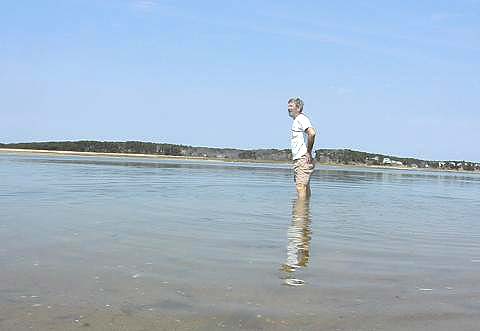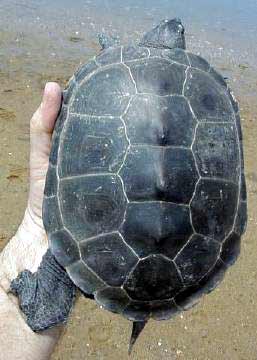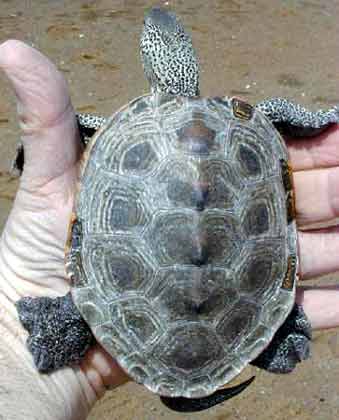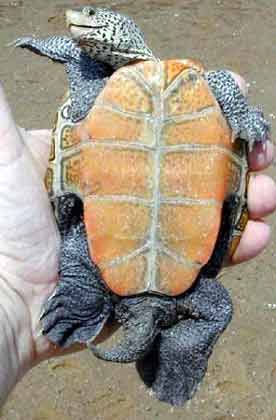May Day — 1 May 2001
Warm, clear and beautiful — summer arrived in the
Land of Ooze. Water temperatures over the tidal flats rose to 72 degrees
by late morning. A glorious way to celebrate May Day.

Terrapins took full advantage of the moment and
criss-crossed Blackfish Creek with the tide. While not quite low enough to
allow easy capture as they slipped through the rip, still visibility was awfully
good and if turtles happened to swim within a few feet, water clarity made it
impossible for them to disappear into the muck. And five terrapins,
three females and two males, made that bad choice of approaching too
closely.

Two of the females were recaptures (#322 and #844),
while the others were all seen for the first time. And very interesting
recaptures they proved to be. Last May 30th, at 3:30 in the afternoon,
these same two turtles were captured in the same location during the same
tide. Now inpidual recaptures are not a rarity, but to capture the same
two turtles on the identical tide one year apart is a coincidence that
stretches odds to the breaking.
These two terrapins look alike, too. Terrapin
322, on the left, is 18.95 centimeters long and weighs 1150 grams; Terrapin
844, on the right, is 18.80 centimeters and 1136 grams. Even the shape of
their scutes and the shade of their carapaces are similar.
 
Except for the fact that they nest on opposite
banks of Blackfish Creek, one on Indian Neck and the other on Lieutenant Island,
they could be twins. It starts you wondering about the social life of our
brackish friends.
Terrapin 1055, a six-year-old turtle, demonstrates
all the identifying characteristics of a typical mature male. And he was
kind enough to pose for the camera to illustrate those traits: the smallish “pin
head” compared with the broader headed female, and the large thick tail compared
with the female’s smaller, thinner tail. Of course, gender dimorphism with
males half the size of mature females is a good indicator, too.
The challenge comes, though, with distinguishing between mature males
and pre-pubescent females of roughly the same size.
 
|